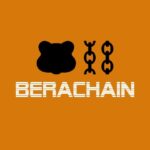Pi Network’s long-awaited v23 upgrade appears to be nearing the finish line. The latest testnet data shows strong stability even under high transaction loads. Additionally, the community is currently preparing for the next major milestone: transitioning to mainnet version 23. Execution of smart contracts is finally within reach, and excitement across the ecosystem is rapidly growing.
Testnet v23 shows strong stability
New blockchain testnet metrics shared by Pi community developers show that protocol version 23 is running smoothly. Even in heavy traffic, the failure rate remains extremely low. This is important because Pi’s v23 upgrade lays the foundation for on-chain smart contracts. This is a feature the community has been waiting for for years.
🚨 #PiNetwork blockchain testnet data 📢 shows that the upgrade of protocol version 23 is progressing well, with failure rates remaining very low even with high transaction volumes 👍 This stable performance points to the next stage, upgrading from Testnet2 to version… pic.twitter.com/sLoRVEEmWA
— PiNetwork DEX⚡️Alon (@fen_leng) November 14, 2025
The developers say that the upgrade from Testnet2 to v23 is almost complete. Once the transition is complete, the core team will move directly to implementing the same upgrade on mainnet. This step marks the point at which the Pi blockchain will be able to run real decentralized apps, smart contracts, and tokenized assets. Community voices are calling it the “closest Pi yet” to enabling full blockchain functionality. Many see this as the last technical step before Pi Network enters the open mainnet phase.
Mainnet metrics continue to rise as activity expands
Pi’s mainnet continues to show steady growth. Over 8.31 billion π of mining rewards have already been moved on-chain. Approximately 5.04 billion π remains locked, while 3.26 billion π is currently unlocked. According to network explorers, the total circulating supply reflects the amount of movement, and the total effective supply exceeds 12.7 billion π.
Operations on mainnet remain active. New accounts are appearing every minute, along with payments, chargeable balances, and transfers between wallets. This level of activity shows that the network is still making progress. Despite ongoing debate over KYC, immigration and the timeline for an open economy.
Pi wallet tools and token creation guide released
In parallel with the testnet progress, the Pi Core team has published new documentation showing how developers can create tokens on the Pi testnet. This guide explains how to set up issuer and merchant wallets. This includes activating trust lines, minting tokens, validating domains with pi.toml, preparing assets for liquidity pools, and more.
This update comes at the same time as Pi Wallet introduced new features related to private key and liquidity operations. The move demonstrates the team’s commitment to expanding Pi’s development capabilities prior to the launch of smart contracts. This document sparked renewed interest in building apps, marketplaces, and tokenized utilities. This is exactly the kind of ecosystem Pi is looking to support once mainnet restrictions are lifted.
Pi’s vision moves to Web3 gaming
The Pi ecosystem is also starting to focus more on gaming. Community update describes Pi Network’s plans to evolve into a Web3 gaming hub. Something similar to a distributed version of Steam. Over 70 million pioneers and growing developer tools. Pi aims to merge digital currency, smart contracts, and gaming economies into a single ecosystem.
If the v23 mainnet upgrade rolls out smoothly, Pi will finally unlock the infrastructure needed to support its vision. At present, attention is focused on the completion of the testnet. Also, with stability improving day by day, v23 latency on mainnet may be lower than many expected.














